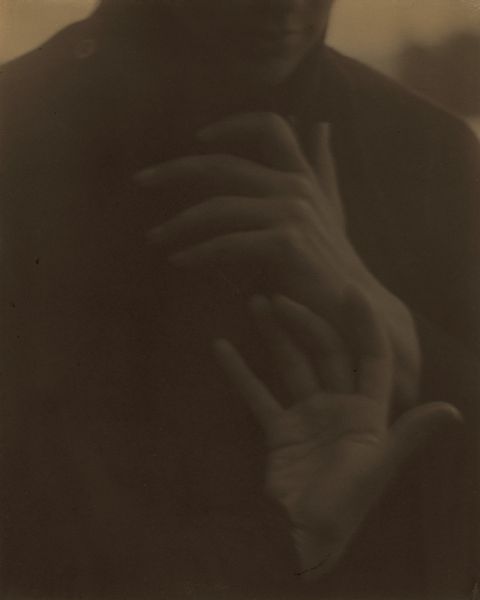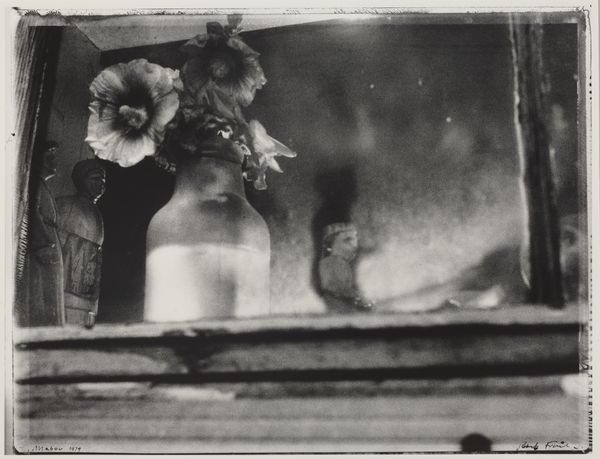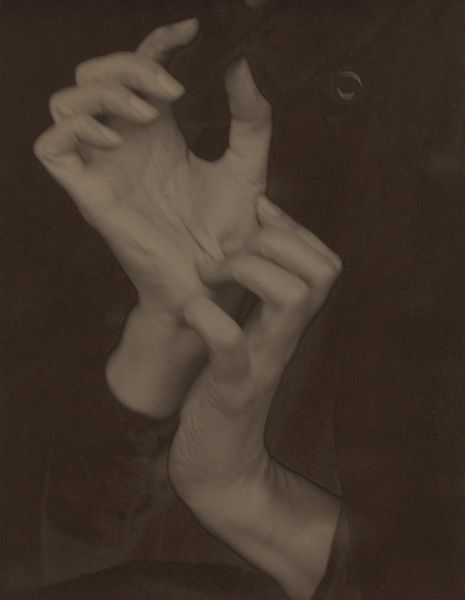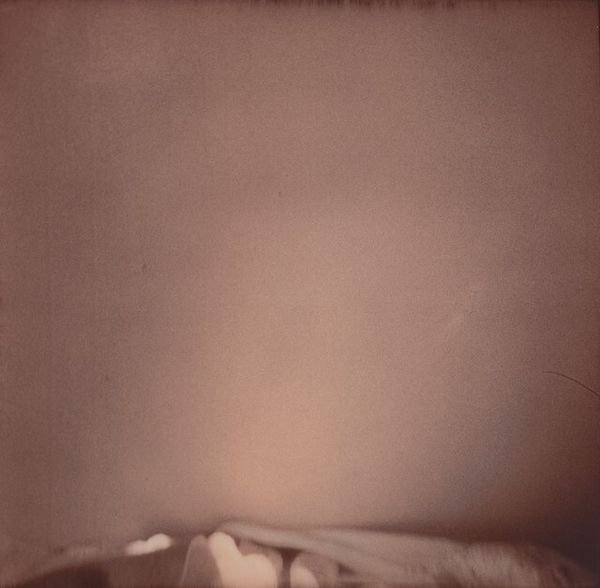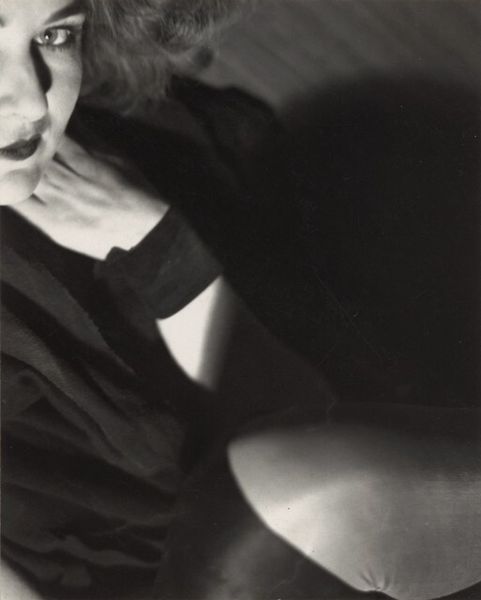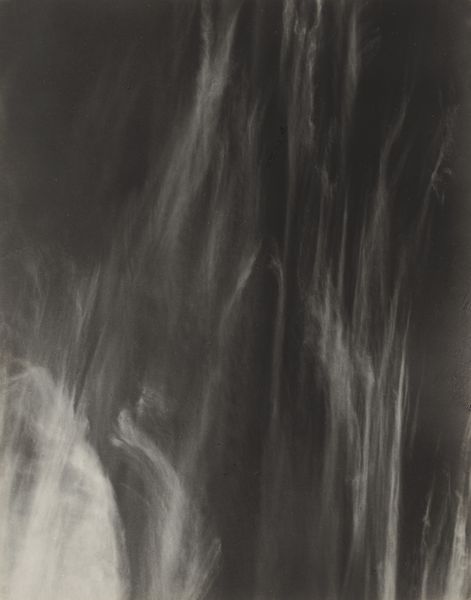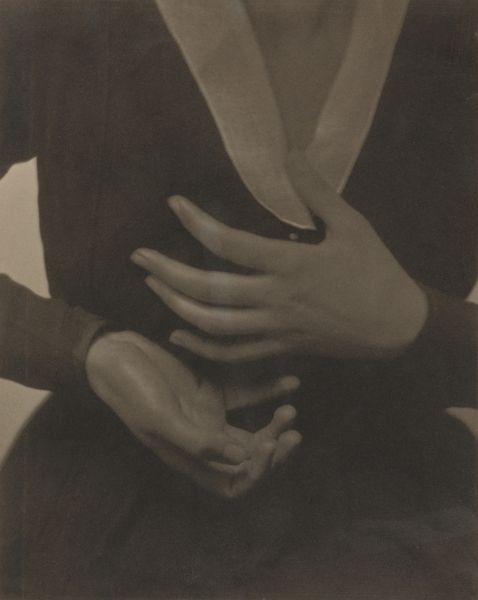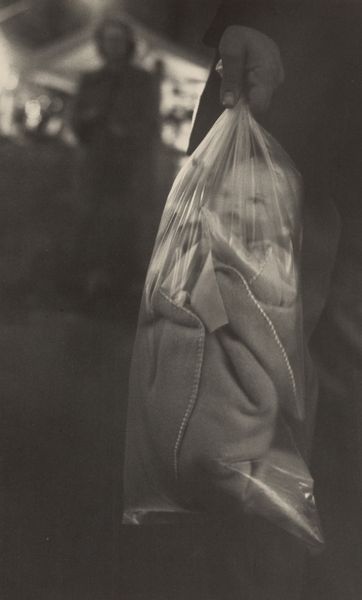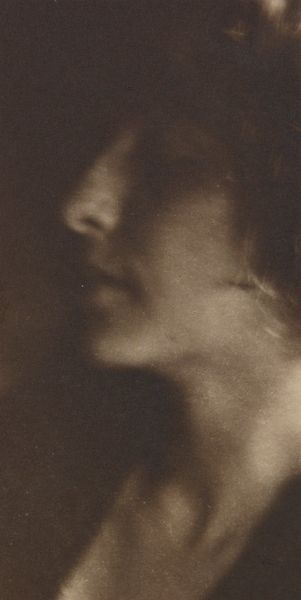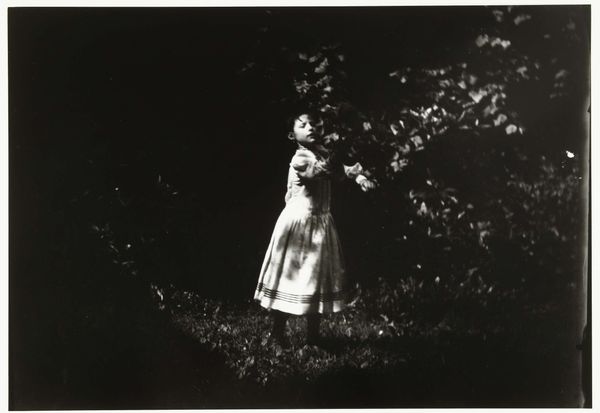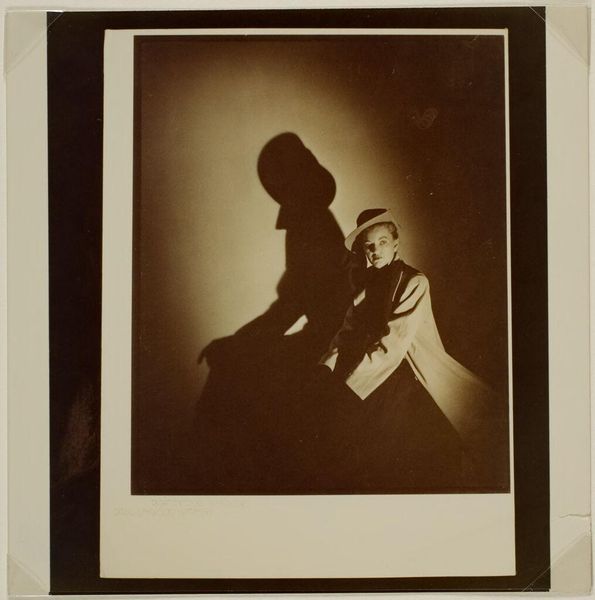
gelatin-silver-print, photography, gelatin-silver-print
#
portrait
#
gelatin-silver-print
#
black and white photography
#
photography
#
black and white
#
gelatin-silver-print
#
monochrome photography
#
symbolism
#
monochrome
#
nude
#
monochrome
Dimensions: 7 5/16 x 9 1/4 in. (18.57 x 23.5 cm) (image)14 x 17 15/16 in. (35.56 x 45.56 cm) (mount)
Copyright: No Copyright - United States
Curator: Ah, look at this atmospheric piece! We're standing before "Musica," a gelatin-silver print created around 1920 by Louis A. Goetz. It's a part of the Minneapolis Institute of Art's collection. What springs to mind when you see it? Editor: A quiet desperation, perhaps? It’s incredibly moody, almost swallowed by shadow. The figure is almost an echo. Curator: Absolutely. Goetz has cloaked this figure in shadow, the composition mostly dark with the subject sitting perched, maybe on a rock? Playing some instrument? What do you make of its symbolism, this musician lost in the gloom? Editor: Well, the nude figure and the monochrome palette certainly evoke a sense of timelessness, pulling from classical allegories. I wonder about the absence of any obvious context. It amplifies the introspective feel. Curator: Exactly! This could be Orpheus himself, mourning a lost love, filling the void with his song, or something equally mythological. It has some of the trappings of symbolism, for sure. Editor: Indeed. The texture of the silver gelatin gives it this fantastic depth, especially the way light caresses the subject's back and shoulders. Almost ethereal. It gives a tangible presence to the intangible sorrow of the piece. But how much can one convey with light and shade alone? Curator: It speaks volumes! The artist evokes such feeling with few details. And maybe that is part of the point... reducing expression down to the fundamentals... like music itself. Editor: I agree, it really whispers rather than shouts. This makes the experience of standing before it all the more compelling. You have to really lean in. Curator: And in leaning in, it feels like the piece embraces you into its subtle folds of introspection, its contemplation of loneliness and the beauty in the musical process. A poignant note to end on, I think. Editor: A dark but rewarding visual poem. I think it has the beauty and truth which carries across generations.
Comments
No comments
Be the first to comment and join the conversation on the ultimate creative platform.
